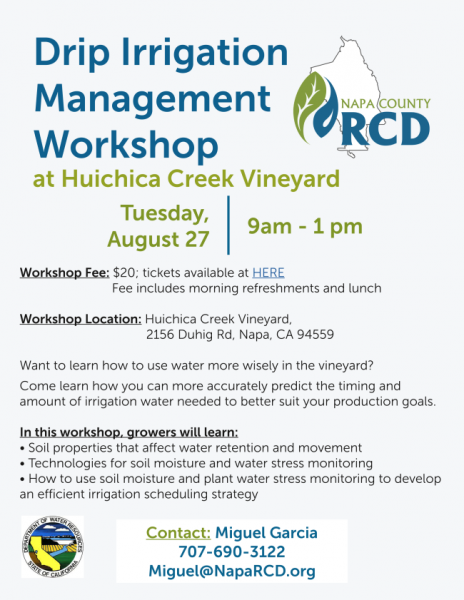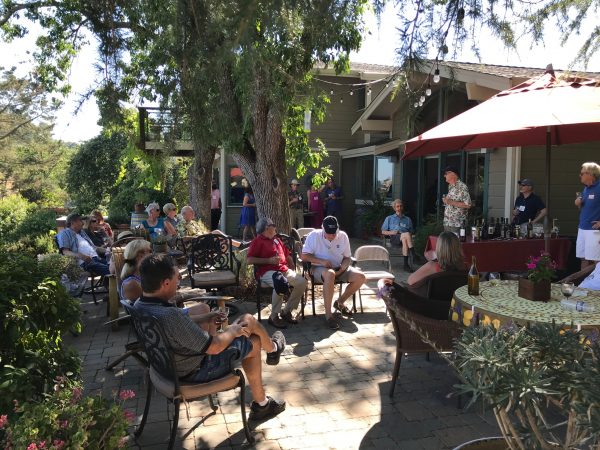See below for an outline of the meetings and educational topics planned for 2020. The Board has decided that members would benefit from more short educational components in meetings – on viticulture. Please review the meeting outlines listed below and we hope to see you at the Holiday Party on December 8th.
December 5, 2019 – Holiday Party, Featuring Local Wines, Food and Music
A fun-filled evening featuring local wines, food, music, dancing to Diamond Dave, a commerative wine glass and raffle prizes.
Date/Time: Thursday December 5th from 6:30pm-10:00pm
Location: The Serbian Cultural Center
Address: 1700 School Street, Moraga
LINK TO PURCHASE TICKETS:
https://lamorindawinegrowers.com/event-calendar/#!event/2019/12/5/lwga-holiday-party
Use coupon code “ccwg” and save $5/ticket
YEAR 2020 MEMBER MEETINGS:
January 26, 2020 – Viticulture/Farming Educational Meeting: Pruning Best Practices, Soils Testing and Board Elections
Meeting topics: pruning: best practices and what to do and avoid doing when pruning yourself or managing your vineyard manager’s pruning. In addition, this meeting will provide information on the benefits of soils testing to correct nutritional imbalances and how to easily complete a soils test for your vineyard or garden
March 29, 2020 – Mildew Control
Meeting topic: mildew control Mildew control is the biggest challenge for viticulture in LWGA due to or damp generally cool weather. This meeting will present best practices, timing, critical mildew period from flowering to fruit set, mildew control products recommended for our area, conventional vs. organic, and brief information on canopy management and other viticulture techniques for mildew control and improved harvest quality
May 31, 2020 – 4th Annual Lamorinda American Viticultural Area Celebration and Members Choice Wine Rating
At this meeting, we will gather to celebrate the creation of our important local AVA. We will meet and share good food and great wine. We will also discuss what we have accomplished and our future goals.
Members choice wine rating: members are invited to bring wine that they have made in two categories: 1) Wines made with LWGA grapes and 2) wines made from grapes outside of the LWGA. The rating is easy: members only pick their top choice Red and White wines in each category, they do not need to score each wine
July 26, 2020 – Composting for Better Grapes and Plants and White Wine Winners – Tasting, Winemaking Explanation and Discussion
Compost is teaming with beneficial microbial life, minerals and fertilizers that are super beneficial for grape vines, and all other plants and vegetables. The results on plants from good compost are often amazing. This meeting will provide instruction on how to easily make compost from your yard trimmings and kitchen scraps.
White wine winners from major competitions (State, Winemakers Magazine, SF Chron, etc) will pour their wines and explain how the wine was made and answer questions. This discussion should help members learn new techniques and ways to improve their winemaking.
September 27, 2020 – Soil Moisture Meters for Improved Quality and Water Conservation and Red Wine Winners – Tasting, Winemaking Explanation and Discussion
Soil moisture meters are a valuable tool for ensuring our vines are not getting too much or too little water. We will be providing an overview of moisture meters and how to use them.
Red wine winners from major competitions (State, Winemakers Magazine, SF Chron, etc) will pour their wines and explain how the wine was made and answer questions. This discussion should help members learn new techniques and ways to improve their winemaking.
December 3, 2020 – LWGA Holiday Party
Members, friends and guests will gather to enjoy good food, good wines, music and dancing. This celebration is also a great opportunity for those in the public who are interested to passionate about wine to taste many of the finest wines being produced in the AVA –local wines that rival the best from other areas.
Additional Winemaking Educational Meetings
Additional educational sessions to assist members with winemaking or improved winemaking techniques may be scheduled in 2020 as well. If any such winemaking meetings are scheduled, this schedule will be updated and members will be notified.
Additional Viticulture/Winegrowing Educational Meetings or Property Visits
Other optional educational sessions on viticulture and winegrowing may also be scheduled. If any additional viticulture meetings are offered, the schedule will be updated and members will be notified.
Members Topics or Site Visits
Any member who would like to lead an educational session on winemaking, viticulture or related topics, or if you would like to invite members over to visit your vineyard or winemaking facilities or if you have suggestions for future meeting, please contact the Board meeting coordinators Gerard van Steyn at gerardvs1@gmail.com or Daniel Howsepian at 5powderhounds@gmail.com, as the Board welcomes member participation.











